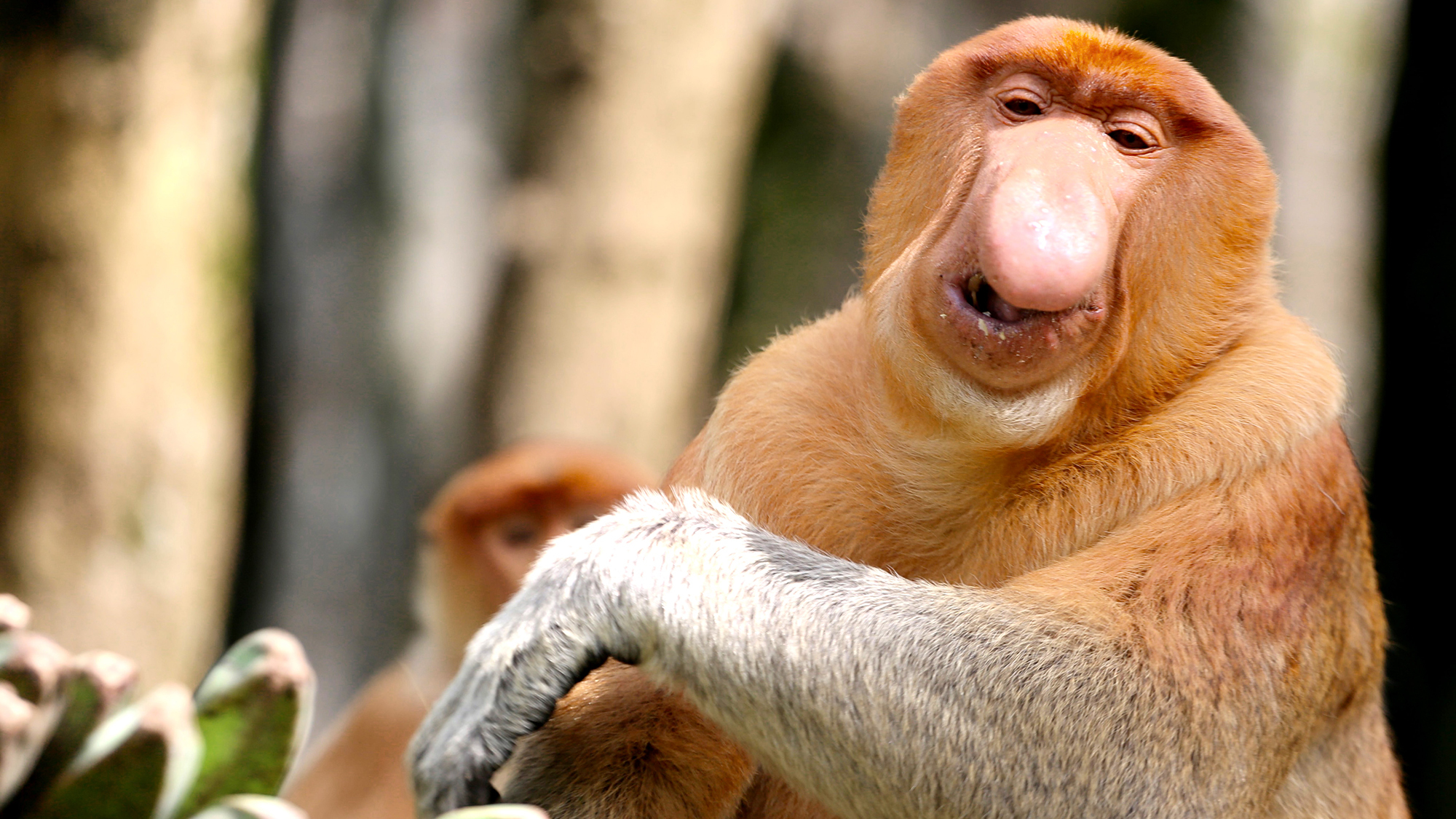

With their long, bulbous, and droopy noses, male proboscis monkeys are often listed among Earth’s ugliest animals. The noses of these endangered primates endemic to the island of Borneo in southeast Asia may be equipped with several benefits. They could play a role in attracting potential female mates. The findings are described in a study published May 23 in the journal Scientific Reports.
Proboscis monkeys are long-tailed tree-dwelling primates that live near Borneo’s rivers and swampy mangrove forests. Some live in groups of roughly 20 monkeys, made of up to a single male and several females. Some males also live in bachelor groups, all with very prominent noses. Even the species’ Latin name–Nasalis larvatus–references the prominent noses on the males.
In the study, a team from The Australian National University in Canberra looked at the bony nasal cavity inside the skulls of proboscis monkeys. They used 3D scans of proboscis monkeys’ skulls housed from museum collections to take measurements of their size and shape. They found that the enhanced size and unique shape of the male’s cavity may have evolved to help them emit louder and deeper calls including nasal roars and honks.
[Related: Primates have been teasing each other for 13 million years.]
“Being able to emit louder and deeper calls thanks to a longer and larger nasal cavity helps male monkeys to assert their health and dominance,” study co-author and Australian National University biological anthropologist Katharine Balolia said in a statement. “This helps the male monkeys attract females and ward off other males.
More females to mate with, generally means more chances to father more offspring. A larger nose that can more easily make honks and nasal roars can help the males show off their quality and status to prospective partners. The jungle-like environment that proboscis monkeys live in may also partially explain why their noses evolved to become so large.
“Proboscis monkeys live in coastal mangroves and forested environments and often can’t see each other through the trees,” said Balolia. “So loud, nasalised calls are important to communicate with each other, especially amongst males.”
[Related: Super semen could be one reason why primates evolved to masturbate.]
Over time, the fleshy nose tissue likely got bigger as it enhanced their ability to let out these nasal sounds. Proboscis monkeys will also rigidly straighten out their noses when giving these honks and roars. According to the team, the females may find the large noses a visually attractive way for selecting mates since it’s a signal of their overall health and dominance.
The study also found that the male’s bony nasal capacity opening–the region where the fleshy nasal soft tissue attaches–gets larger with age. This is consistent with the older monkeys also having larger noses than the younger ones.
“This coincides with when they achieve dominance status among other male monkeys, allowing them to scare off other males and attract a lot of females who are ready to breed,” said Balolia.
